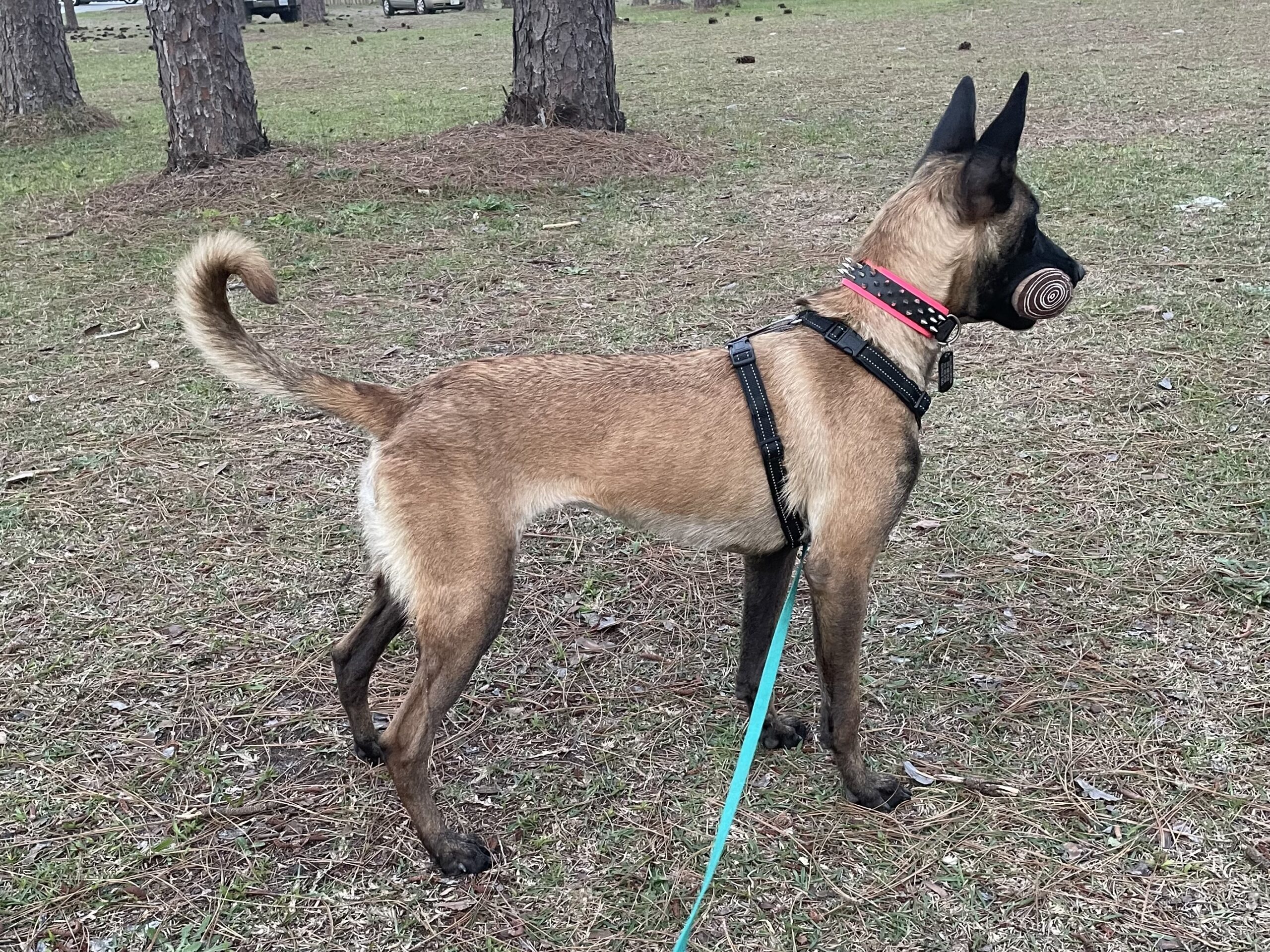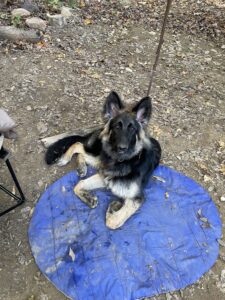Although a lot of focus is put on what happens during a session with your trainer, the real learning happens between your sessions! One of the most valuable pieces of your training program is your study sessions where you work on your homework assignments.
Study sessions are training sessions that you set up in order to practice a specific skill, progress towards a training milestone, or proof a behavior. Setting up your study session correctly is essential, but all study sessions look different (just like all training plans look different!)
Putting the Pieces Together
The basic outline for most of our reactivity practice is similar. (Your individual training plan may differ – this is a general outline!)
- Head to your training location, and make sure your dog is ready to work.
- Let your dog know when there is a trigger approaching.
- Support your dog with their behavior games until the trigger is gone, and your dog is back to their green zone.
- If your dog starts to inch towards their red zone, get out of there!
General Tips for Reactivity Study Sessions
- Get familiar with your dog’s body language and zones. What does it look like when they’re relaxed? A tiny bit stressed? What behaviors do they show when they’re getting close to their threshold?
- Make a plan before you begin. Where are you training? What training skills are you going to use today? What treats? What are the behaviors you’re looking for?
- Be mindful of speed. Remember: two dogs approaching each other mean that distance decreases at twice the speed. Having one dog stationary can make a massive difference!
- Know your escape routes. Working in your yard, or driving to a location and parking there can be an excellent safety net. If things get dicey, just pop your dog back inside! Otherwise, take advantage of parked cars & side trails to make a quick escape.
- Use predictable “helpers”, especially in the beginning. Capitalize on locations with dedicated paths, fences, or other natural barriers that direct traffic. This limits the variability of triggers, and reduces the likelihood that you will be surprised. This predictability can help simplify training and make for more linear progress – and fewer setbacks. Some of my favorite predictable locations include the parking lots of dog parks, pet store parking lots, and areas overlooking popular walking paths.
- Keep things short and sweet. Dealing with triggers is exhausting, and learning doesn’t happen when your dog is overtired. It’s never a bad idea to cut a session too short. It’s always a bad idea to push a session too far.
- Ask for help! If you notice a trigger approaching and you can’t escape, ask if they can help you by waiting a minute so you can step off the path, or let you pass. “Excuse me, would you mind waiting there for just a second so we can pass? My dog is nervous and learning not to bark. Thank you so much for your help!”



